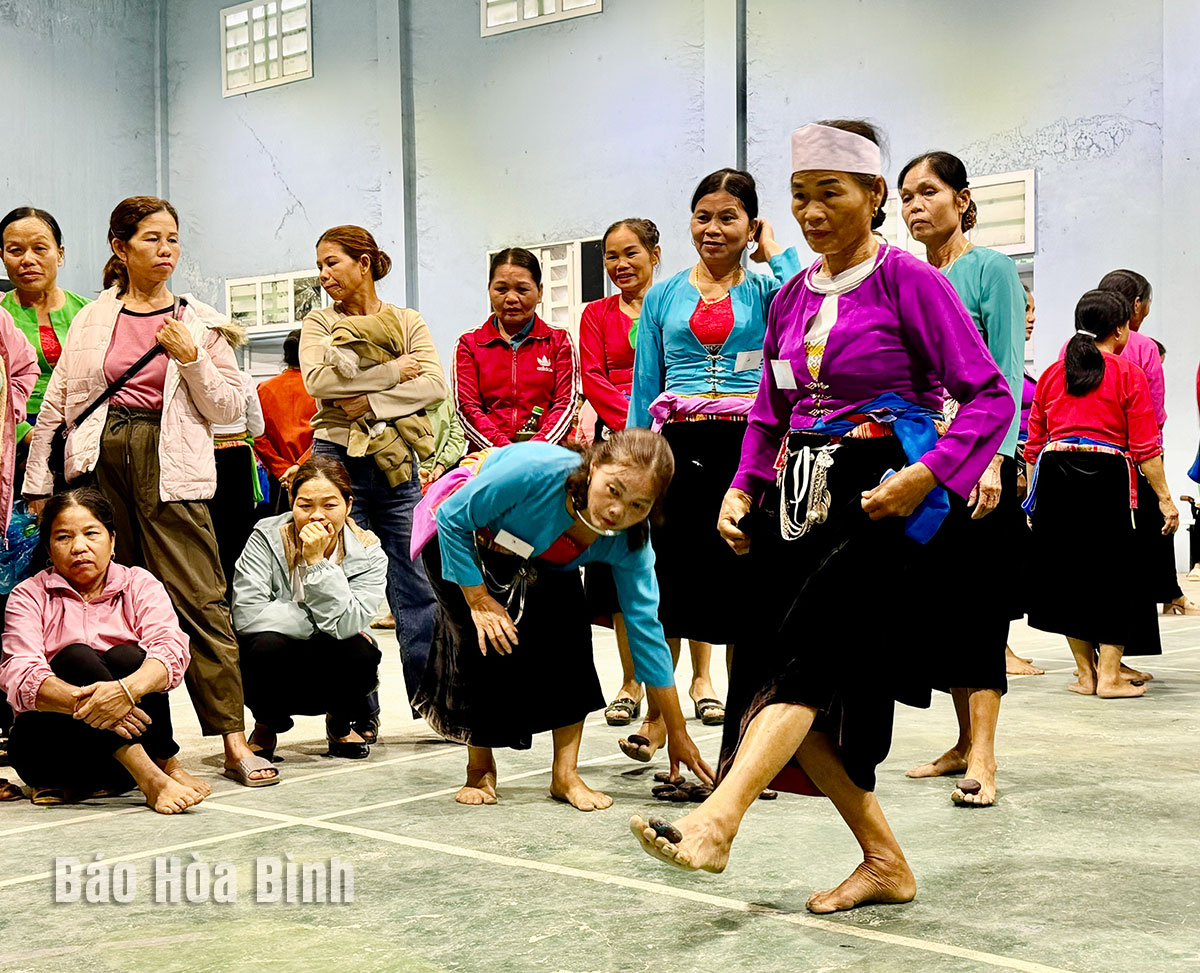
As part of Project 6 under the national target program for socio-economic development in ethnic minority and mountainous areas in 2024, Lạc Sơn District, Hoa Binh province focuses on diverse and practical activities to promote the project's goal: "Preserving and promoting the beautiful traditional cultural values of ethnic groups in conjunction with tourism development."
 Artisans experiment with traditional Muong danh mang during a training and experimentation program organized by Lạc Sơn District.
Artisans experiment with traditional Muong danh mang during a training and experimentation program organized by Lạc Sơn District.
With a budget of 3.6 billion VND from the project, Lac Sơn district allocates 1.5 billion VND to purchase equipment for cultural houses in 50 villages of ethnic minorities. An additional 600 million VND is dedicated to organizing three cultural, artistic, and sports activities, including a festival of traditional Muong folk performances, training and competitions in the traditional danh mang percussion game, and a xec bua festival with gong art performances. Furthermore, 1.5 billion VND is allocated for surveying, inventorying, collecting, and documenting heritage; preserving traditional festivals; developing policies and supporting artisans; and training and fostering intangible cultural heritage practices.
These project activities have motivated the effective preservation and promotion of traditional cultural values, significantly enhancing the spiritual life of ethnic minority communities and fostering cultural, artistic, and sports movements in the district.
Phong Phu commune, Tan Lac district of Hoa Binh province, is widely regarded as the cultural heartland of the Muong ethnic group. Among its many traditional communities, Luy Ai hamlet (formerly Ai hamlet) stands out as a rare location where the customs and way of life of the Muong Bi people remain largely intact.
The Truong Kha temple festival, a distinctive cultural event held every three years in Vu Ban township, Lac Son district, returned recently with vibrant rituals and folk traditions of the Muong people. Located next to the Buoi River in the Muong Trao fields, the Truong Kha Temple is dedicated to the three Kun Dol deities, revered for teaching farming techniques, irrigation, weaving, and protecting the harvest.
The demand for spaces serving community activities of residents in various areas across Hoa Binh city has been satisfied as local cultural houses now feature modern, spacious facilities thanks to the effective implementation of Resolution No. 49/NQ-HDND issued on December 28, 2021 by the city People's Council, which approved the plan for reorganising, converting, and allocating land for the construction, repair, and expansion of cultural houses in Hoa Binh’s villages and residential areas until 2025.
At the end of May, the Hoa Binh Provincial Ethnic Arts Troupe organized a series of performances for residents in Region 2 and Region 3 communes across the province. Bringing art to ethnic communities in remote, isolated, and especially disadvantaged areas has become a meaningful activity. These are not merely artistic performances but also journeys to disseminate cultural values, enrich spiritual life, and contribute to preserving the cultural identity of ethnic minorities.



 Artisans experiment with traditional Muong danh mang during a training and experimentation program organized by Lạc Sơn District.
Artisans experiment with traditional Muong danh mang during a training and experimentation program organized by Lạc Sơn District.